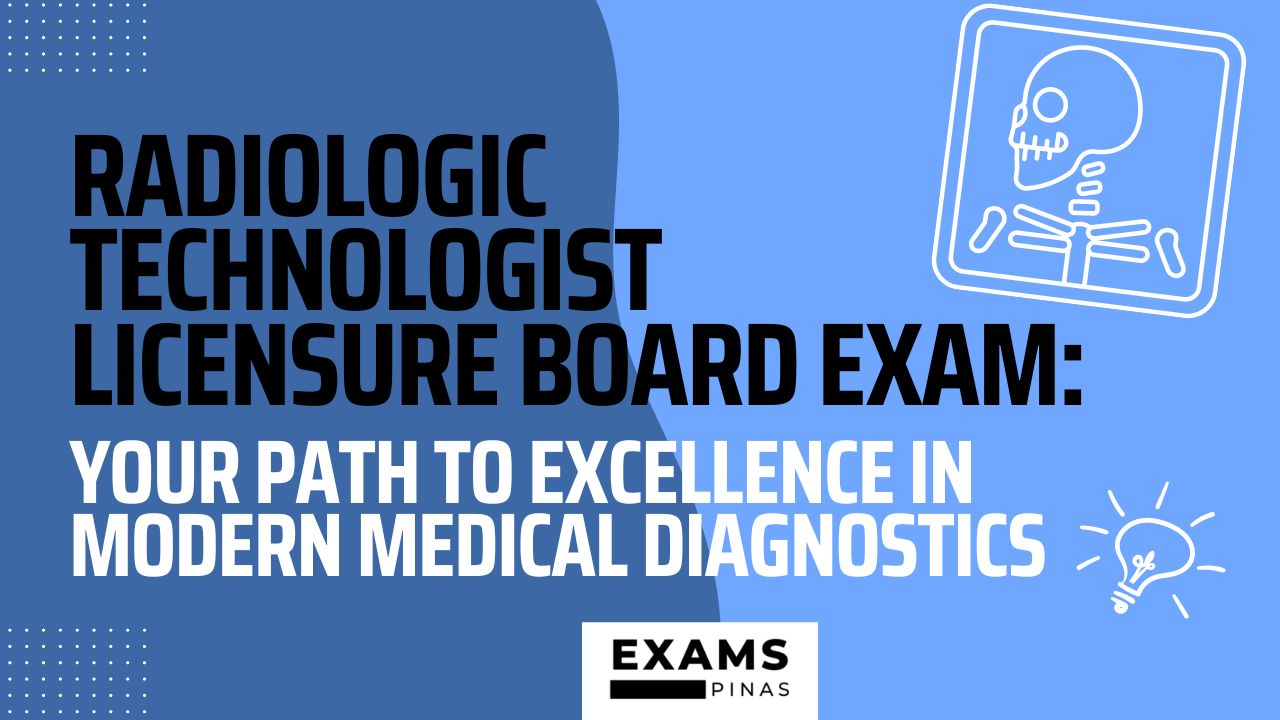In the realm of modern medical diagnostics, the field of radiologic technology holds a paramount and irreplaceable position. For individuals aspiring to become adept radiologic technologists in the Philippines, the Radiologic Technologist Licensure Board Exam emerges as a pivotal milestone on their professional journey. This comprehensive guide serves as a beacon of light, illuminating the intricate pathways of the application process, the prerequisites, the breadth of exam coverage, and the all-important schedule. Armed with this knowledge, aspiring radiologic technologists can pave their way to flourish in the dynamic and critical domain of healthcare.
Application Process: Navigating the Pathway
The initial step on this journey involves fulfilling the educational eligibility criteria. Aspiring candidates must hold in their possession a Bachelor’s degree in Radiologic Technology, duly conferred by a recognized and reputable educational institution.
Once educational eligibility is established, the journey towards licensure takes a concrete form through the submission of requirements. The conduit for this communication is the Professional Regulation Commission (PRC), the regulatory body overseeing licensure in the Philippines. Aspiring radiologic technologists should closely monitor the PRC’s official website for updates regarding the application period and the requisites for successful submission. The cornerstone of this stage involves presenting mandatory documents that corroborate the candidate’s eligibility and commitment.
Mandatory Documents for Candidacy
- Transcript of Records: A verified copy of the candidate’s Transcript of Records, a tangible testament to the successful culmination of a Bachelor’s degree in Radiologic Technology.
- Accomplished Application Form: A meticulous and complete rendition of the application form provided by the PRC, signifying the candidate’s earnest intent.
- Passport-Sized Photos: Recent passport-sized photographs, meticulously adhering to the specifications meticulously outlined by the PRC.
- Payment of Fees: Aspirants carry the responsibility of remitting examination and processing fees, adhering to the guidelines established by the PRC.
Scope of Examination: Navigating the Waters of Knowledge
The Radiologic Technologist Licensure Board Exam casts a wide net, encompassing a spectrum of subjects intrinsic to the practice of radiologic technology. These subjects stand as pillars, each contributing a unique facet to the radiologic technologist’s skillset:
- Radiographic Physics and Equipment Operation: In this segment, candidates demonstrate their prowess in radiographic physics principles and operational mastery over radiologic equipment. It’s a fusion of theoretical understanding and hands-on dexterity.
- Radiographic Techniques and Procedures: A critical evaluation of candidates’ comprehension of diverse radiographic techniques tailored to meet the demands of various medical conditions. This tests adaptability and clinical judgment.
- Radiation Protection and Biology: This domain underscores candidates’ grasp of radiation safety protocols and their awareness of the biological repercussions associated with radiation exposure.
- Anatomy and Physiology: Precision in medical imaging hinges on a solid foundation of human anatomy and physiology. Candidates’ proficiency in this realm is scrutinized for its role in ensuring accuracy.
The Annual Rhythm: Exam Schedule
The Radiologic Technologist Licensure Board Exam unfolds its chapters annually. Pertinent details such as exact dates, examination venues, and application deadlines materialize through formal announcements disseminated by the PRC. Aspirants should keenly observe these announcements to synchronize their efforts effectively.
A Journey of Significance
Embarking on the journey towards becoming a licensed radiologic technologist in the Philippines isn’t merely a professional pursuit; it’s a gratifying odyssey with far-reaching implications for modern healthcare. By acquainting oneself with the intricacies of the application process, the prerequisites, the scope of examination, and the exam schedule associated with the Radiologic Technologist Licensure Board Exam, aspirants arm themselves with the tools of success in this pivotal profession. Acquiring licensure extends beyond a mere certificate; it is the validation of expertise, the gateway to impactful participation in accurate medical diagnostics, and the embodiment of dedication to quality patient care. The journey is grand, the rewards are significant, and the impact is immeasurable.

